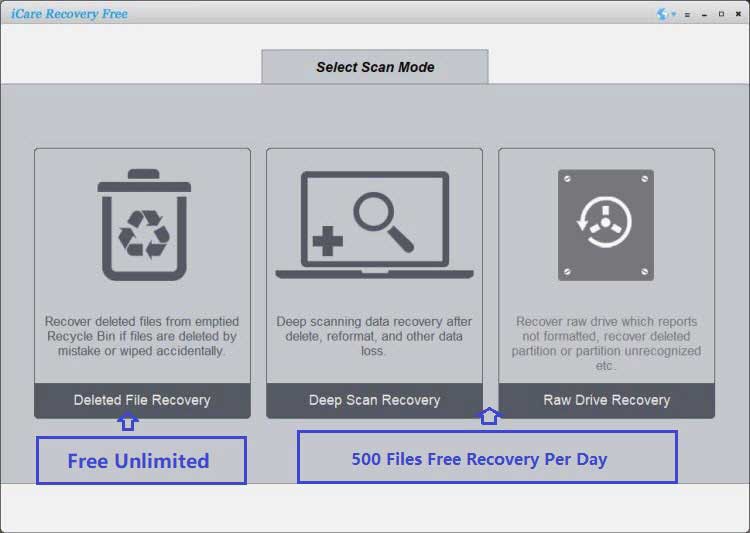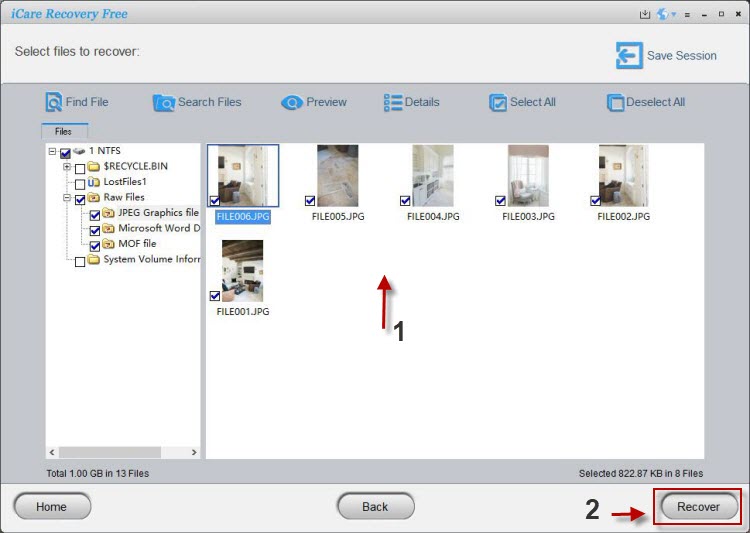How to Recover Formatted SD Card from Camera
Accidentally formatted your camera's SD card and lost all your photos and videos? Don’t panic — in many cases, it’s possible to recover your data using the right tools and techniques. This guide will walk you through proven methods to retrieve your files.
What Kind of Formatting Does a Camera Perform?
Most digital cameras provide two types of formatting on memory card:
- Quick Format: This is the default in most cameras. It erases the file system index but leaves actual data intact. Recovery is usually possible. (Data can be restored by free tool iCare Recovery Free)
- Full (or Low-Level) Format: Usually SD card full format can be reversed from camera on a computer with professional data recovery software like iCare Recovery Free, however some professional or DSLR cameras offer this under "Low-Level Format" or "Deep Format". This type of format may overwrite data sectors, making recovery far more difficult or impossible.
Check your camera's formatting options carefully. If you chose a quick format, your chances of recovery are much higher.
How to Recover Formatted SD Card (Best Recovery Score on A Computer)
iCare Recovery Free is a user-friendly powerful recovery tool that offers basic quick undelete from camera SD card together with deep scan that allows you to recover lost files from formatted or corrupted SD cards from any camera on a Windows computer. Here’s how to use it: (Please insert camera SD card to a Windows computer first.)
 Download and install iCare Recovery Free from the official website:
icare-recovery.com
Download and install iCare Recovery Free from the official website:
icare-recovery.com
- Launch the program and select the recovery mode — choose "Deep Scan Recovery" for formatted cards.

- Select the SD card from the list of detected drives and click “Next.”
- Wait for the scan to complete. This may take several minutes depending on the card size.
- Preview and select found files, including images and videos. Check the files you want to recover.

- Click “Recover” and save your files to a location on your computer (not back to the SD card).
iCare Recovery Free offers a no-cost option to recover essential files. It’s especially helpful for formatted SD cards where the file system has been reset but actual data still exists.
Also read: Unformat software and unformat SD card
Other Recovery Tools to Consider
If iCare doesn’t work or you want to try alternatives, consider:
- Recuva – Free tool from Piriform with simple recovery features. Quick san.
- PhotoRec – Open-source software with powerful recovery capabilities. No UI, not user friendly.
- EaseUS Data Recovery Wizard – User-friendly interface with high recovery rate (free version limited).
Do Cameras Have an Unformat SD Card Option?
Most digital cameras do not have a built-in "Unformat" option. Once you choose "Format" on your camera, the file system is reset and the data is marked as deleted. However, the actual image and video files are still physically present until overwritten, making recovery with a PC tool possible.
Do Cameras Format Option Delete Everything on SD Card
When an SD card is formatted, the data isn’t immediately erased. Instead, the space is marked as available for new data. This means your photos and videos might still be intact — as long as you haven't overwritten them. So please stop using the SD card, do not take new images or videos clips to avoid data overwriting. If you have already saved new images or videos, some of the deleted files will be corrupted.
When Recovery May Not Be Possible
Unfortunately, there are situations where recovery may fail or only partially succeed:
- Low-level formatting was used: This physically overwrites the data sectors.
- New data was saved after formatting: Taking more photos or recording video can overwrite the original data permanently.
- Card was corrupted before formatting: Severe damage (logical or physical) may prevent full recovery.
- Hardware failure of the SD card: If the NAND memory or controller is damaged, recovery software may not detect the card properly.
- Fake SD cards: Low-quality or counterfeit SD cards may fail unpredictably and corrupt stored data beyond recovery.
Tip: Always test recovery before assuming data is permanently lost.
How to Maximize Recovery Success After Formatting Your SD Card
To improve your chances of successful data recovery, follow these important guidelines:
- Stop using the SD card immediately. Every new photo or file could permanently overwrite lost data.
- Do not try to format the card again. Avoid further formatting attempts, even if the card seems unreadable.
- Avoid using the camera to access the card. Connect it to a PC instead via a card reader.
- Use professional-grade recovery software as soon as possible — delay can lower your recovery rate.
- Perform a deep scan or full scan with your recovery tool, not just a quick scan.
- Recover files to a different location (your computer's drive), not back to the same SD card.
The sooner you begin recovery and the less you use the card, the higher your recovery success rate will be.
Steps to Recover a Formatted SD Card
Follow these steps to maximize your chances of recovery:
- Stop using the SD card immediately. Avoid taking new photos or videos.
- Connect the SD card to your computer. Use a card reader for better results.
- Use a reliable recovery tool like iCare Recovery Free. (See steps above)
- Scan the SD card. Let the software perform a deep scan to detect recoverable files.
- Preview and recover files. Save them to a different drive to prevent overwriting.
Best Practices to Prevent Data Loss
- Regularly back up your files to cloud or external storage.
- Always eject SD cards safely from your computer or camera.
- Use high-quality SD cards from trusted brands.
- Avoid formatting unless absolutely necessary.
While recovering a formatted SD card isn't always guaranteed, following these steps gives you a strong chance of success. With the right approach and tools like iCare Recovery Free, you can often get your precious memories back quickly and safely.